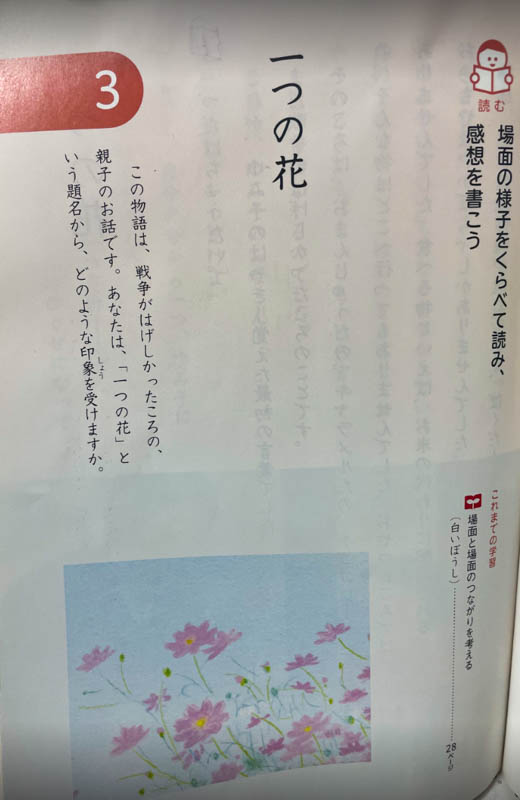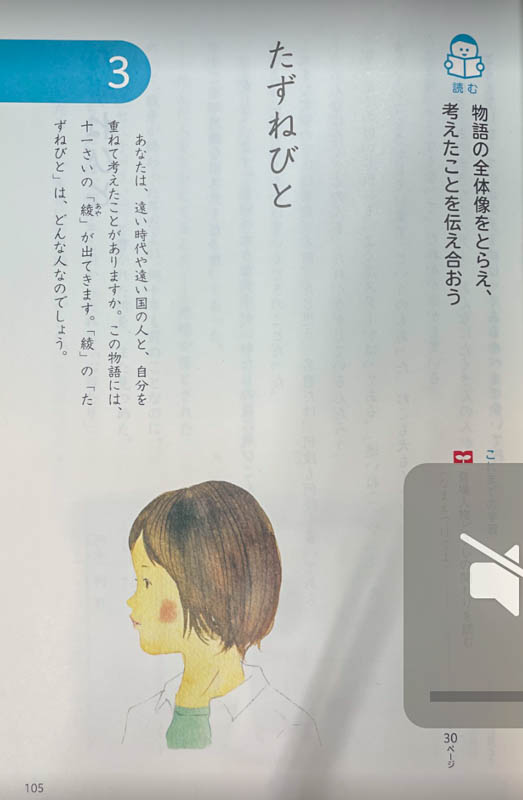IB UOI and Japanese Class for Elementary Students Vol.3 at CGK International School
In the Japanese language classes at CGK International School's elementary division, we are developing unique lessons that incorporate the principles of the International Baccalaureate (IB) program while adhering to the curriculum guidelines of the Ministry of Education, Culture, Sports, Science and Technology (MEXT).
This term, we introduced a Unit of Inquiry (UOI) on the theme of "conflict" undertaken by 4th and 5th graders.
In this class, we went beyond the framework of Japanese language education, incorporating a wide range of activities such as learning history from an international perspective, developing critical thinking skills, and expressing emotions through art.
Approach Based on Central Idea and Key Concepts
- Theme transcending subject boundaries: Where we are in place and time
- Central idea: Reflecting on people's lives and history helps us live in harmony with others, the environment, and ourselves.
- Key concepts: "Perspective" and "Causation"
Understanding the Diversity of Perspectives
Students examined the complex historical event of "war" from various angles.
- Individual perspective:
Through literary works in the textbook units "One Flower (ひとつの花)" and "The Visitor (たずねびと)," they considered war from the standpoint of the characters and expressed their own feelings and thoughts about war through words and abstract art. - Multifaceted perspective:
We proceeded to provide opportunities to consider and learn about the situations and viewpoints of other countries, not just Japan. - Perspective across time:
We had opportunities to re-examine past events from a modern viewpoint and think about the present and future.
By focusing on these aspects in creating lessons with the students, they learned that there are diverse views on a single event. They also cultivated an attitude of respecting others' positions and thoughts.
Deep Insight into Exploring Causes
By exploring the causes of war from multiple angles, they understood the background of complex historical events. By analyzing the factors leading to the Pacific War from multiple perspectives and deeply understanding the reasons behind each country's actions, they developed the insight to avoid repeating past mistakes.
Towards Realizing the Central Idea
To realize the central idea that "Reflecting on people's lives and history helps us live in harmony with others, the environment, and ourselves," we conducted classroom discussions where students were encouraged to respect others' opinions and interpretations (perspectives) and practice dialogue. We also provided opportunities to consider how to apply lessons from the past (causes) in daily life with others and how to contribute to creating a harmonious community.
Learning Flow
1. Exploring War Stories: 3-Stage Reading Comprehension
In class, we analyzed war-related stories "One Flower" and "The Visitor" from the 4th and 5th grade Japanese language textbooks. The learning process was conducted in three stages.
- ①Structural Reading
- Scene division
- Recognition of introduction, development, climax, and conclusion
- Identifying the climax - ③Figurative Reading
- Identifying characters and analyzing their personalities
- Interpreting the author's intentions from detailed expressions in the narrative - ④Critical Reading
- Sharing questions from the text and discussing them in class
- In-depth discussion about the story's climax
Through this process, students developed skills in understanding story structure, critical reading, and interpreting the author's intentions. Particularly in the discussion about the climax scene of "One Flower," students demonstrated deep insight. For example, in the scene where the father silently gazes at the cosmos flower, various interpretations were offered by the students. One child interpreted this as a response to Yumiko's wish for "just one," while another overlapped the cosmos with Yumiko, interpreting the father's thoughts about the future. There was also an interpretation that the cosmos embodied wishes for Yumiko's growth.
Furthermore, towards the end of the class, there were comments showing awareness of the deep meaning embedded in the title "One Flower." The interpretation that "the cosmos and Yumiko are one" can be said to sharply capture the overall theme of the story.
In this way, the students engaged seriously in activities to understand the story structure, pay attention to detailed narrative expressions, and deeply consider answers to their own questions. Through this process, we can say that their ability to read texts critically and interpret the author's intentions greatly improved.
2. Exploring War from Multiple Perspectives: Creating Reports through Student-led Learning
Next, we engaged in inquiry-based learning on the theme of "war". Using the 5th-grade textbook unit "Design That Everyone Can Use Easily (みんなが使いやすいデザイン)" as a reference, student created reports while exploring their own questions. In these reports, emphasis was placed on clearly distinguishing between "facts" and "opinions". Through these efforts, students honed their skills in objectively analyzing information and communicating it effectively.
This learning process began with the student's own naive questions and developed while incorporating multiple perspectives. Examples of questions from the students included:
- "Why didn't women go to war?"
- "Why did children have to separate from their families?"
- "Why were clothes bought with tickets?"
- "Why was Hiroshima chosen for the atomic bomb?"
- "Were children from other countries also fighting?"
- "What was the situation in Africa, South America, and Mongolia at that time?"
- "Wasn't there a better metal than iron?"
These questions became a trigger to look not only at Japanese history but also at the situations and viewpoints of other countries.
As they researched, some students noticed that the scale of damage varied by region in Japan, and began to focus their inquiry on specific regions or prefectures of interest. For example, some decided to research air raids on Ishikawa Prefecture and its air raid plans after learning that it suffered less damage, while others began collecting information about damage in Ota Ward where their grandmother lives. All processes were carried out in a student-led learning environment.
In the inquiry process, taking advantage of the characteristics of an international school, we utilized resources in both Japanese and English. This aimed to achieve unbiased information gathering, acquisition of multifaceted perspectives, and improvement of translanguaging abilities.
When supporting students in this project, we paid particular attention to ensuring that, while learning about the background and causes of the Pacific War, students would not unilaterally judge or criticize war events based solely on biased information. We watched over them to cultivate the ability to grasp history not only from Japan's perspective but also from an international viewpoint, and to provide opportunities to consider the complex factors of war from multiple angles.
Through this activity, we feel that we were able to deepen comprehensive learning that cultivates student's critical thinking skills and report writing abilities.
3. Experiential Learning through Field Trip
We conducted a field trip to the National Showa Memorial Museum (昭和館) in Tokyo, where students had a valuable opportunity to directly learn about life in Japan during and after the war, as well as the thoughts of people at that time. This experience primarily helped in understanding the harsh living conditions of that era from the Japanese perspective.
However, the learning didn't end there. In post-trip learning, attempts were made to grasp history in a broader context. Students deepened their understanding of the causes of the Pacific War through questions such as:
- Why did Japan fall into such a difficult situation?
- What caused Japan to establish Manchukuo?
- What were the causes of the Sino-Japanese War?
- How did Japan respond when resources became scarce?
Through this series of learning processes, students were able to understand the importance of viewing history from multiple angles and develop a more balanced historical perspective that isn't confined to a single viewpoint.
4. Artistic Expression: Depicting Impressions of War through Words and Art
As a conclusion to the learning, students had the opportunity to creatively express their complex feelings about war.
This activity was conducted in the following steps:
- Linguistic Expression:
They verbalized their feelings and thoughts about war using appropriate adjectives and nouns. Through this process, Students honed their vocabulary skills to accurately express their emotions. Students came up with various expressions such as "terrifying atomic bomb," "poor people," "sad loneliness," "painful escape," "red burnt field," and so on. - Conversion to Visual Art:
They visualized the emotions expressed in language as abstract modern art. They challenged themselves to express subtle emotional nuances that couldn't be fully conveyed through words, using color, shape, and composition. In this activity, with the cooperation of homeroom teachers, they deepened their learning about the impressions of each color and methods of expression in abstract art, while also relating it to artistic expression they had learned in their homeroom UOI.
In the creative process, each child seriously engaged in exploration, using different materials such as crayons, chalk, brushes, paint, tissue paper, scraps of paper, rollers, and foamed soap, and devising colors to better express the scenes they imagined. Through this project, they were able to deepen their understanding of the complex theme of war through artistic expression while discovering new methods of self-expression.
After completion, by appreciating each other's works and receiving opinions from friends, they learned that there are diverse interpretations and methods of emotional expression for the same theme, and showed respect for each other's sensibilities and expressions.
This activity also provided an opportunity for students to organize their own feelings and thoughts on the difficult theme of war. Moreover, it fostered the ability to verbalize emotions, abstract thinking skills, visual expression skills, and comprehensive expression skills that fuse language and art.
At the end, we reflected on the central idea: "Reflecting on people's lives and history helps us live in harmony with others, the environment, and ourselves." Based on the knowledge gained through the learning, students considered and wrote about "what values, attitudes, and actions are important to cherish in order to live together with others."
The following summaries were produced:
- I do not discriminate against people based on skin color or family lineage.
- If there's a dispute in class, I tell others to follow the rules.
- We shouldn't always do what we want; if we don't listen to others' opinions, it could lead to something like war.
- If everyone shares, wars might end.
- To live, we need companions, people who believe in us, and important people.
- What's important for living in harmony with oneself and others is ensuring people's lives are safe, and not forcibly taking things just because we want them. It's better to acquire things through our own efforts without hurting others - this makes both ourselves and others happy, and our achievements are more recognized and felt.
- We shouldn't always do what we want; if we don't listen to others' opinions, it could lead to something like war.
- Through learning about war, I understood the importance of understanding others’ feelings.
Reflection
This UOI was developed to go beyond mere Japanese language story learning, integrating social studies and art learning, to lay the foundation for children to become members who respect diversity and create a peaceful and harmonious society in the future.
By developing around the two key concepts of "perspective" and "causation" and exploring war, it became a learning opportunity to cultivate critical thinking skills and multifaceted perspectives needed in global society.
In Japanese language classes at CGK International School, we practice global education by fusing Japanese curriculum guidelines with IB principles. We will continue to aim for lesson creation that ensures the acquisition of knowledge and skills (*) to be cultivated in each grade, without being bound by textbook learning.
(*)Japanese language classes at CGK are based on the elementary school curriculum guidelines of the Ministry of Education, Culture, Sports, Science and Technology, and are designed to achieve the goals for each grade level.
Author Profile
-

-
Sayuri - IB PYP/MYP Japanese Teacher (Japan)

IB PYP/MYP Japanese teacher of CGK International School.
Master's degree in Educational Technology, Western Michigan University.
While conducting research in her field of expertise to review ICT education in Japan and the curriculum review of the School of Education, she has also published research papers with a German publisher.
Two years teaching Japanese at Western Michigan University and five years teaching Japanese to Japanese students at a school in New York City.























































